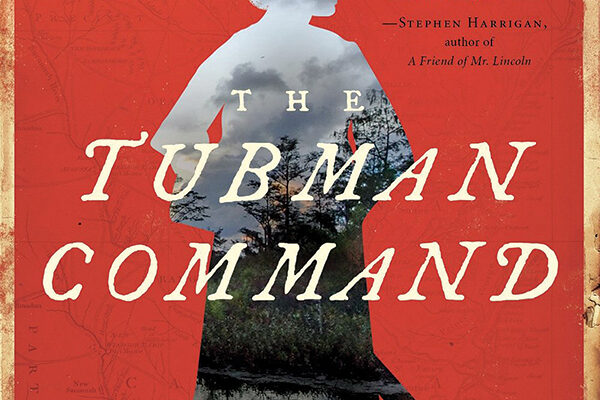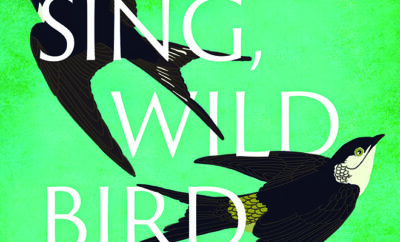
The Tubman Command by Elizabeth Cobbs
It’s 1863, Beaufort, South Carolina. Harriett Tubman, who escaped slavery on a Dorchester County, Maryland, plantation in 1849 via the Underground Railroad, has spent the intervening years guiding more than 300 people from slavery to freedom. Now, with a bounty on her head and as a scout for the Union Army, she’s about to become the first woman to lead an armed raid of the Civil War.
Harriet Tubman’s husband, John, a free man, opposed her flight to freedom; a year later he married a free woman and had free children. Devastated, Harriett devoted her efforts to smuggling her family and many others to Canada. When the Civil War started in 1861, she returned to the Sea Islands of South Carolina. That’s part of the historical record.
The more difficult portion of creating fiction around a person is creating an authentic internal dialog for someone whose times are so different from our own, Cobbs says. For many women, letters serve as the basis of biographies; Harriett couldn’t write one.
‘“Contrabands belong in back,’ the soldier repeated with a scowl that cottoned no sass. He tilted the barrel of his long-shanked musket to indicate the path leading around the porch to the refugee camp and beyond it, the rows of silky white cotton for which Hilton Head was famous. ‘The general’s expecting me,’ she said in the confident, storyteller’s tone she used with people who must be convinced to mark her words despite believing she could have nothing to say. The sentry’s expression wasn’t hostile–she was only a woman after all–but his gray eyes narrowed. ‘General Hunter’s in a meeting. Orders are no interruptions. Except for a scout named Moses.’”
Thus Harriett is introduced as the scout everyone assumes is a man. “When strangers met her, they saw a woman. Once they knew she was Harriet Tubman, they saw a neuter without personal needs or soft spots. On the Underground Railway, the name Moses had kept bounty hunters looking for a man.”
As Cobbs continues to flesh out the story and Harriet’s feisty personality, she slips in a few zingers. In this meeting, Harriet listens for cues, knowing that she must choose the right moment to convince a roomful of men of anything. She wants to speak up but knows that General Hunter “would listen better if he asked the question. Men always did.” After the disastrous Union raid on Charleston a month before, the army needs more men, more recruits, and Harriet knows where to find them. Her network of spies and her own scouting give her the confidence to propose a military raid up the Combahee River into Confederate territory to free perhaps a thousand slaves on the rice plantations.
But to do that, she first must make an expedition of her own, alone. Her scouts had revealed that mines, called torpedoes, had been placed at strategic points in the river, and slaves were typically the persons who placed them. She makes a dangerous foray onto the Heyward plantation to learn the position of the torpedoes; once those are confirmed and reported to General Hunter, she still has the task of convincing him that she must accompany the troops on the raid. She’s a woman, Moses, the person who can convince the slaves to escape the only life they know.
In the novel, Harriett develops a relationship with Samuel Heyward, who had escaped from the Heyward plantation. She’s reluctant to soften her heart, after John Tubman had broken it. Her attraction to him is dimmed when she learns he has left his wife and three children, and he’s determined to bring them out during the planned raid. She’s angry until Samuel explains the circumstances. ‘“Lucy had no interest in me. And I had my eye on another gal. But that didn’t matter. Heyward decided it was time for Lucy to breed, and I was the one. He’d bought me and my brother from a Virginia trader. Liked our size…We decided I’d sleep on the floor…Then Heyward’s driver told me that mas’r planned to sell Lucy to the next trader. Didn’t want no woman who wasn’t a breeder…(so) we decided we’d best get to it.”’
Cobbs begins each chapter with a quote from a historical document gleaned from her research and provides a list of original sources for those who wish to delve deeper, including oral histories conducted by the Federal Works Progress Administration in the 1930s that tell the story in enslaved people’s own words. The Wisconsin State Journal in June 1983 noted, “(Tubman) is but a woman…but in patriotism, sagacity, energy, ability and all that elevates human character, she is head and shoulders…above many who vaunt their patriotism and boast their philanthropy.”
Who shall write America’s history? For those who wish to, this novel is a must read. ■







